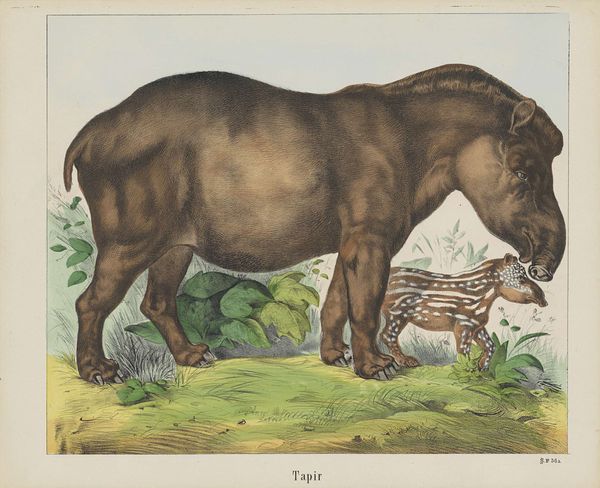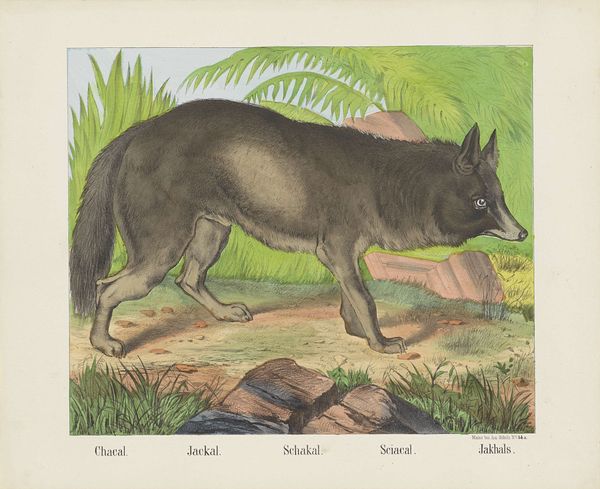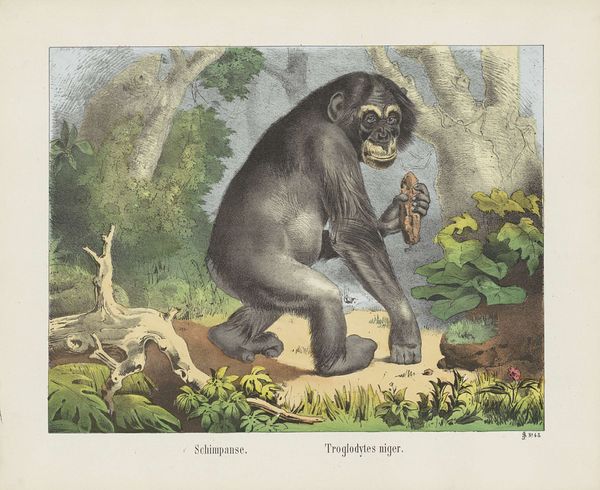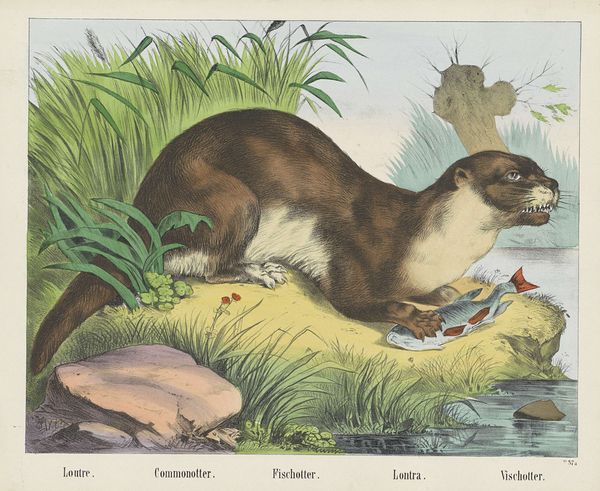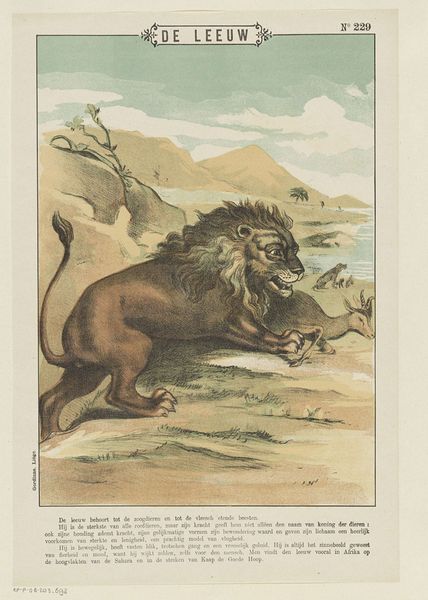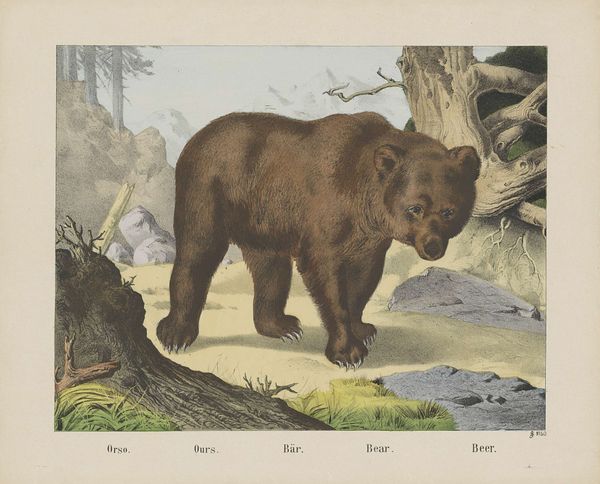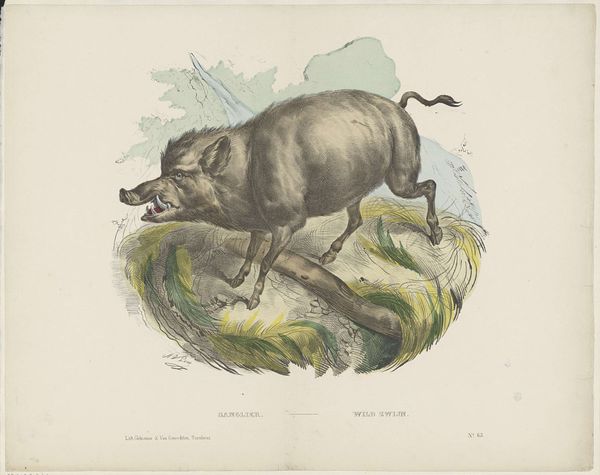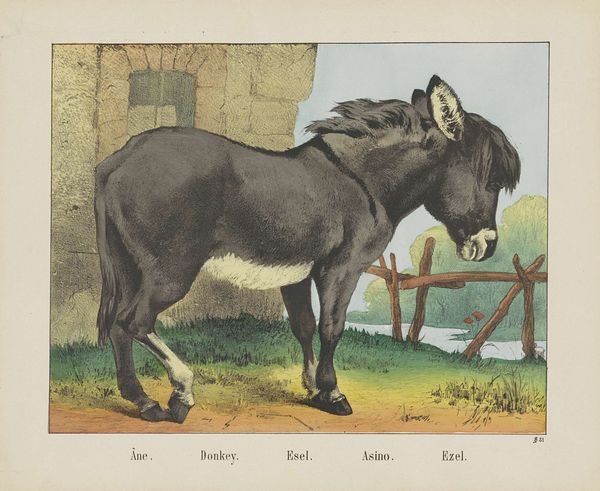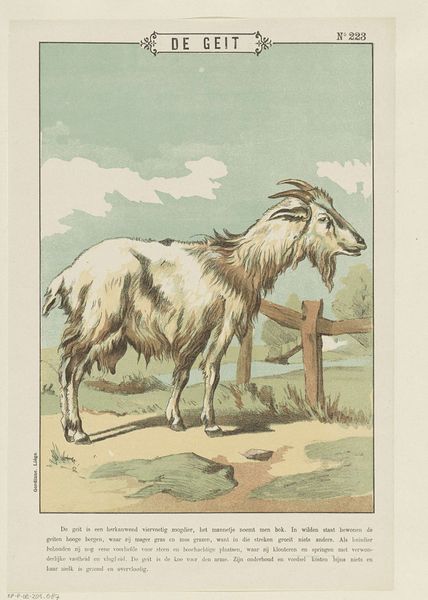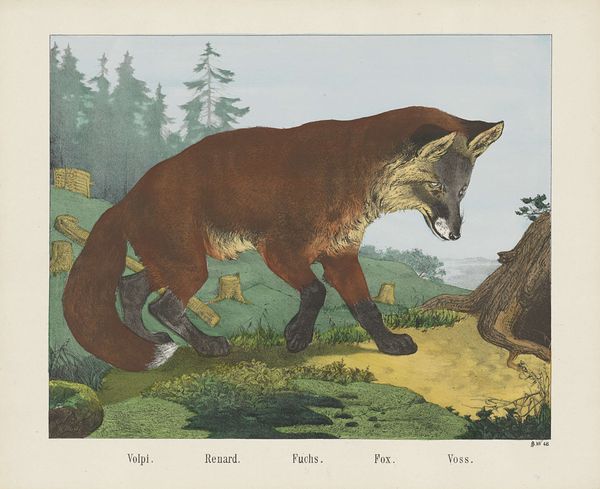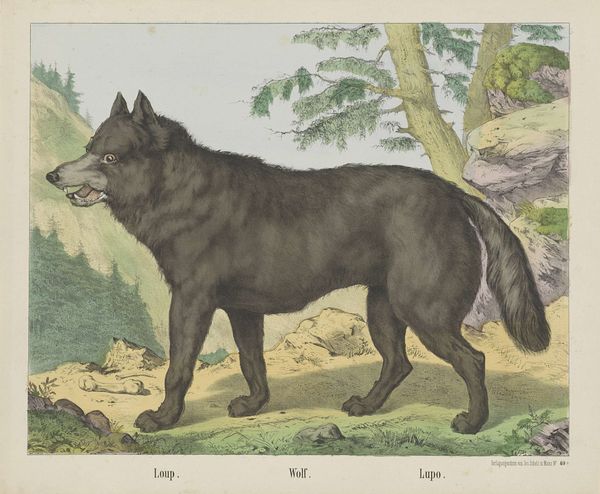
Ours à fourmis. / Ant-bear. / Ameisenbär. / Formicoleone. / Miereneter 1829 - 1880
0:00
0:00
firmajosephscholz
Rijksmuseum
drawing, lithograph, print
#
drawing
#
animal
#
lithograph
# print
#
caricature
#
pencil drawing
#
naturalism
#
realism
Dimensions: height 349 mm, width 430 mm
Copyright: Rijks Museum: Open Domain
This print of an anteater was produced by the firm Joseph Scholz, using a method called chromolithography. This process allowed for the mass production of colorful images. Unlike traditional artistic techniques, chromolithography used limestone printing plates to apply multiple layers of ink, creating a rich and detailed final product. The anteater’s form emerges from the build-up of these layers, giving depth and texture to its fur and the surrounding foliage. The process demanded skilled labor, with each color requiring a separate stone and careful alignment. The resulting image reflects both the artistry of the draftsmen and the industrial capabilities of the printing firm. Chromolithography democratized image-making, bringing naturalistic depictions into homes and classrooms. It’s important to recognize that while this print may not fit neatly into the category of ‘fine art,’ its production involved significant technical skill and reveals much about the intersection of art, industry, and social accessibility in its time.
Comments
No comments
Be the first to comment and join the conversation on the ultimate creative platform.
